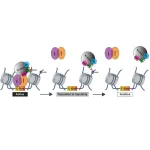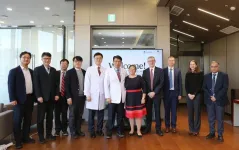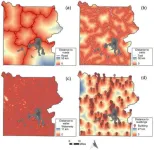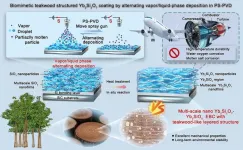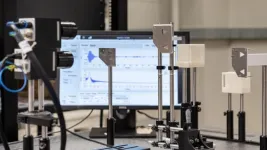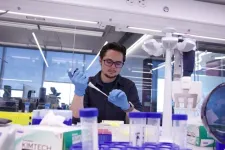By uncovering how these histone modifications influence the brain, the team has identified a novel mechanism for controlling circadian gene expression and behavioral rhythms. The team’s findings, published in Nature [https://doi.org/10.1038/s41586-024-08371-3], on Wednesday, January 8, could eventually guide the development of targeted therapies for conditions involving circadian rhythm disruptions, such as insomnia, depression, bipolar disorder, and neurodegenerative disease.
“Our findings emphasize that the brain’s internal clock is influenced by chemical monoamine neurotransmitters in a manner not previously appreciated, such that monoamines can directly modify histones, which in turn regulate brain circadian gene expression patterns, neural plasticity, and sleep or wakefulness activity,” says lead author Ian Maze, PhD, Howard Hughes Medical Institute Investigator, Professor of Neuroscience and Pharmacological Sciences at the Icahn School of Medicine at Mount Sinai, and Director of the Center for Neural Epigenome Engineering at Mount Sinai.
“This groundbreaking mechanism reveals, for the first time, how circadian events that stimulate neurotransmitter signaling (or vice versa) in the brain can exert dynamic effects on neurons by directly altering DNA structure,” adds Yael David, PhD, a chemical biologist who leads The Yael David Lab at Memorial Sloan Kettering Cancer Center and co-lead author of the study. “We’re committed to gaining a more comprehensive understanding of these mechanisms so that this work can eventually contribute to the development of therapeutic strategies for treating circadian-related and other brain disorders.”
Past work by the Maze Laboratory found that serotonin and dopamine, in addition to their role as neurotransmitters—chemical messengers that carry signals between nerve cells, controlling a multitude of vital bodily functions—can also attach to histone proteins, specifically H3. These proteins directly modulate gene expression programs in the brain that contribute to complex biological processes and behavior (including neurodevelopment, drug relapse vulnerability and stress susceptibility) and contribute to disease, when perturbed. The lab further learned that the enzyme responsible for modifying histones with serotonin and dopamine is transglutaminase 2 (TG2).
In their latest study, researchers from the Nash Family Department of Neuroscience and The Friedman Brain Institute at Mount Sinai and Memorial Sloan Kettering Cancer Center used a highly interdisciplinary approach to decipher the biochemical mechanism of TG2. The teams found that TG2 acts as a regulator of intracellular monoamine neurotransmitters with an ability to not only add monoamines to histone H3 but also erase and exchange one monoamine neurotransmitter for another on H3, with different monoamines controlling gene expression patterns through independent mechanisms.
“The idea originated from a simple observation of the chemical intermediates formed by TG2 with its co-factor, revealing a new dynamic,” says study first author, Qingfei Zheng, PhD, a previous postdoctoral fellow in the Yael David Lab, who is now a faculty member at Purdue University.
“These findings, among the first of their kind, imply that multiple brain regions, which can harbor heterogenous pools of monoamines, may rapidly exchange monoamines on histones in response to external stimuli to directly regulate gene expression programs,” explains Dr. Maze.
“This unique mechanism suggests that additional histone monoamine modifications could be dynamically regulated, potentially playing roles in controlling complex events in the brain,” adds Dr. David.
Based on this novel mechanism of action, the team speculated that intracellular fluctuations in monoamine concentrations can lead to their selective utilization by TG2, which could then trigger new histone modifications. Indeed, investigators identified histaminylation (referring to TG2’s reaction with the metabolic donor histamine) as a new modification of histones and showed that it, along with the allied process known as H3 serotonylation, plays a critical role in regulating circadian rhythms in the mouse brain, along with circadian behavior.
“Histaminylation also suggests a novel neurotransmission-independent mechanism for how our brains control sleep/wake cycles, which are disrupted in many disorders,” Dr. Maze says.
Given the pivotal role histamine plays in other biological processes and disease states, including immune system regulation and cancer, researchers are now interested in further exploring how TG2-dependent monoaminylation of histones is controlled.
“By elucidating TG2 regulatory mechanisms, we may be able to gain valuable insights on diseases of monoaminergic dysregulation, including depression, schizophrenia, and Parkinson’s disease. Our work truly represents a foundational study that will hopefully lead to more advanced research in humans, with important therapeutic implications,” concludes Dr. Maze.
The remaining authors, all with the Icahn School of Medicine at Mount Sinai except where indicated, are: Benjamin Weekley, PhD; David Vinson, PhD, Ryan Bastle, PhD, Aarthi Ramakrishnan, MS, Bioinformatics; Ashley Cunningham, PhD Candidate; Sohini Dutta, PhD; Jennifer Chan, PhD; Min Chen, PhD; Sasha Fulton, PhD Candidate; Giuseppina Di Salvo, Associate Researcher; Lingchun Kong, PhD; Lauren Dierdorff, PhD Candidate; Li Shen, PhD; Shuai Zhao (PhD Candidate, Tsinghua University); Robert Thompson, PhD (Princeton University); Stephanie Stransky, PhD (Albert Einstein College of Medicine); Nan Zhang, PhD (Ohio State University); Jinghua Wu, PhD (Purdue University); Haifeng Wang, PhD (Tsinghua University); Baichao Zhang, PhD (Tsinghua University); Lauren Vostal (Memorial Sloan Kettering Cancer Center); Akhil Upad, (Memorial Sloan Kettering Cancer Center); Henrik Molina, PhD (The Rockefeller University); Simone Sidoli, PhD (Albert Einstein College of Medicine); Tom Muir, PhD (Princeton University); Haitao Li PhD (Tsinghua University);
About the Mount Sinai Health System
Mount Sinai Health System is one of the largest academic medical systems in the New York metro area, with 48,000 employees working across eight hospitals, more than 400 outpatient practices, more than 600 research and clinical labs, a school of nursing, and a leading school of medicine and graduate education. Mount Sinai advances health for all people, everywhere, by taking on the most complex health care challenges of our time—discovering and applying new scientific learning and knowledge; developing safer, more effective treatments; educating the next generation of medical leaders and innovators; and supporting local communities by delivering high-quality care to all who need it.
Through the integration of its hospitals, labs, and schools, Mount Sinai offers comprehensive health care solutions from birth through geriatrics, leveraging innovative approaches such as artificial intelligence and informatics while keeping patients’ medical and emotional needs at the center of all treatment. The Health System includes approximately 9,000 primary and specialty care physicians and 11 free-standing joint-venture centers throughout the five boroughs of New York City, Westchester, Long Island, and Florida. Hospitals within the System are consistently ranked by Newsweek’s® “The World’s Best Smart Hospitals, Best in State Hospitals, World Best Hospitals and Best Specialty Hospitals” and by U.S. News & World Report's® “Best Hospitals” and “Best Children’s Hospitals.” The Mount Sinai Hospital is on the U.S. News & World Report® “Best Hospitals” Honor Roll for 2024-2025.
For more information, visit https://www.mountsinai.org or find Mount Sinai on Facebook, Twitter and YouTube.
###
END
